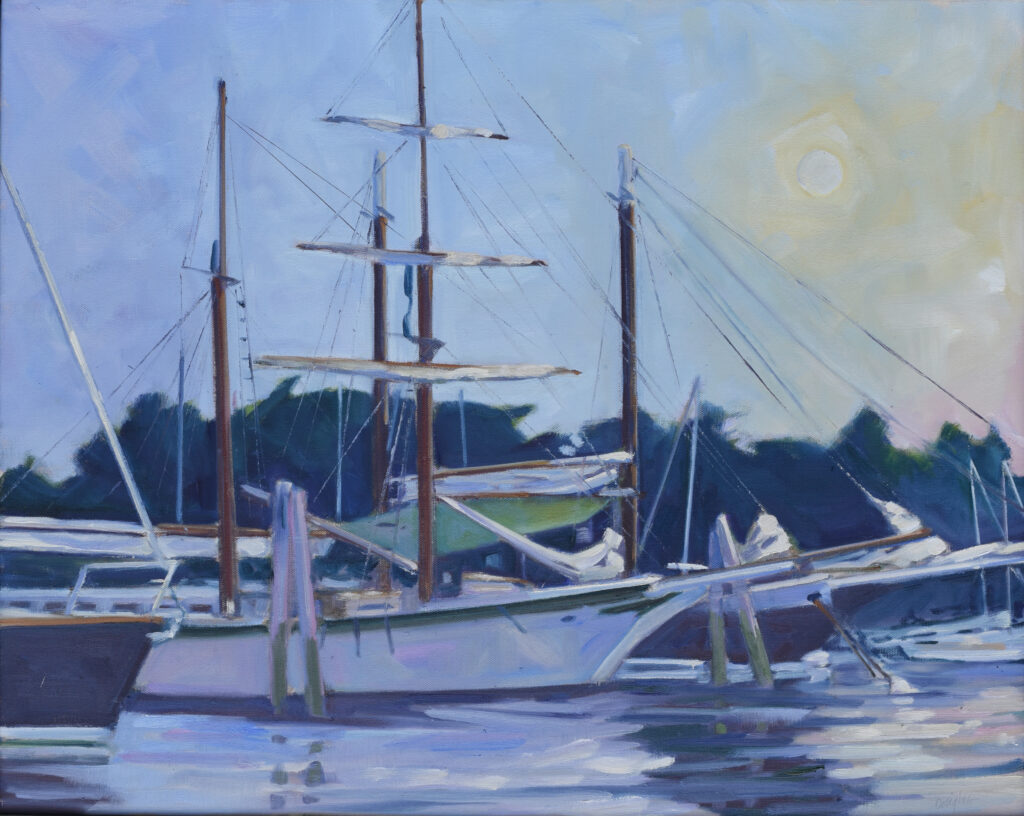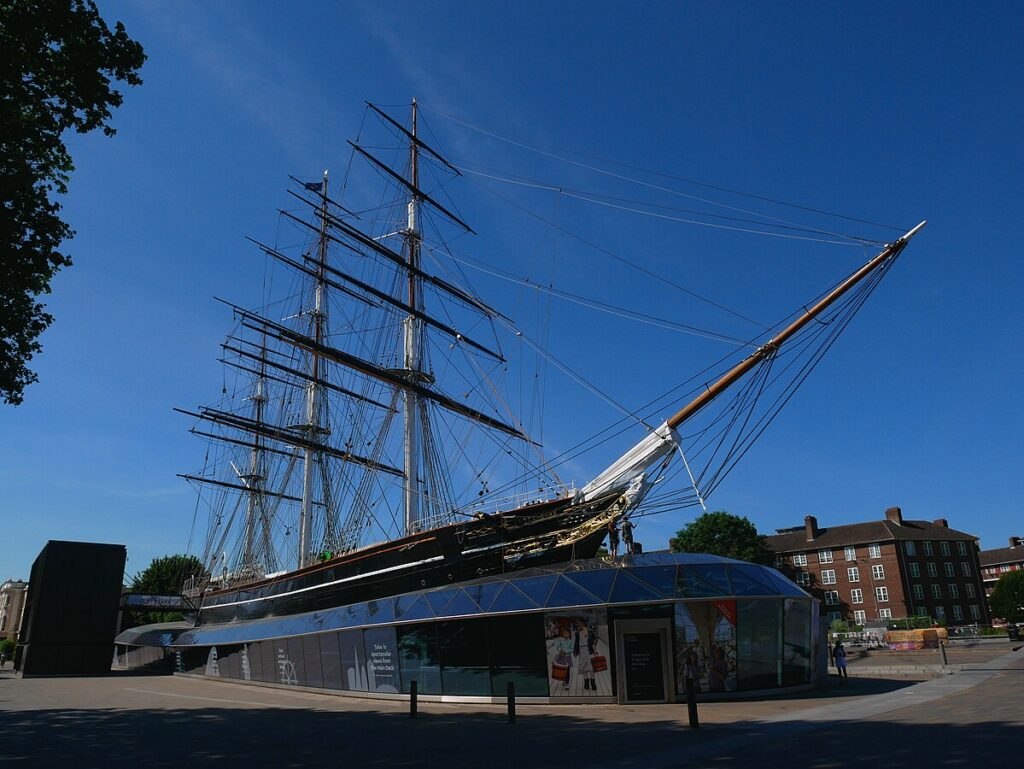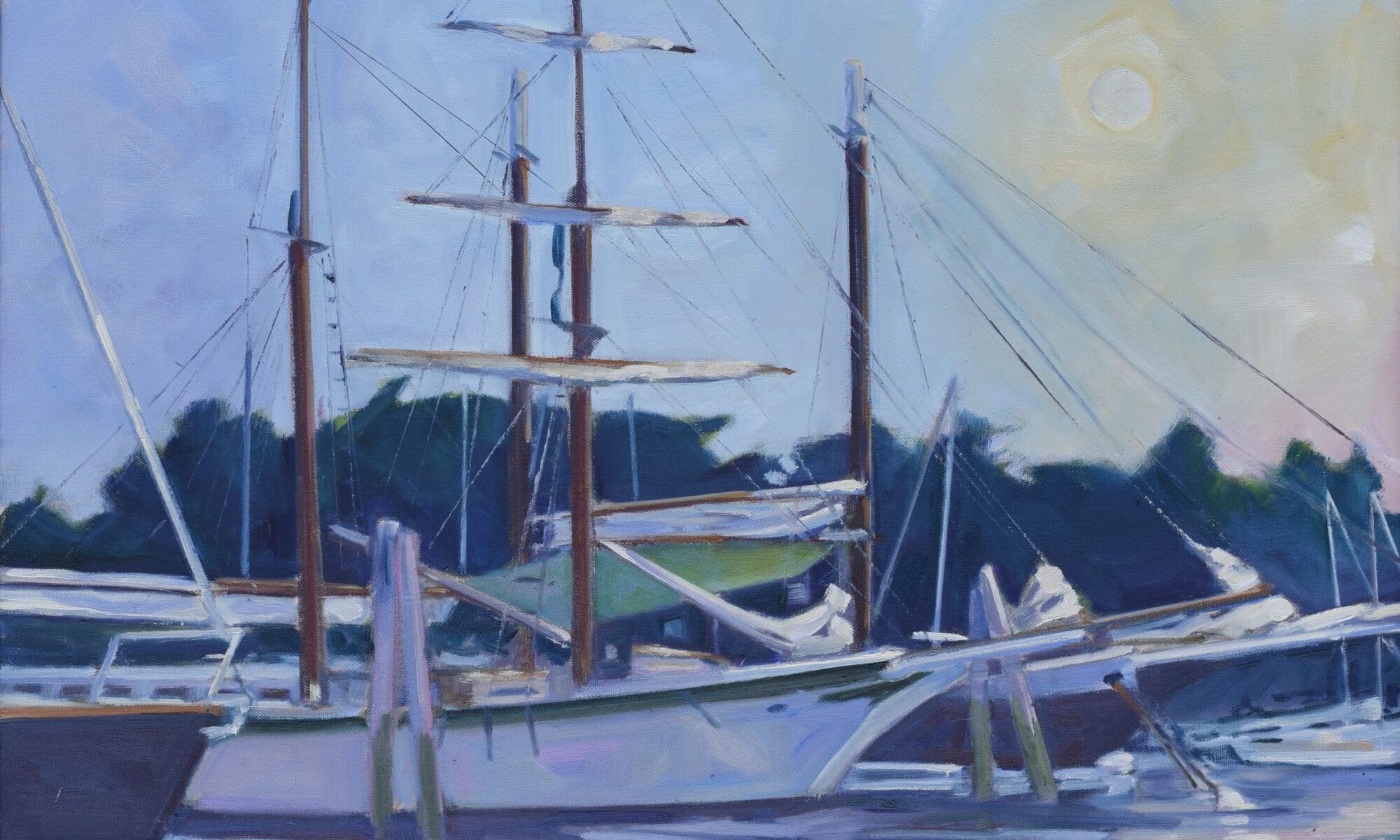
This painting benefitted from a good long spell in drydock.
I started it a few years ago on the docks at Camden harbor, for Camden on Canvas. That’s the brainchild of Colin Page, and it’s become a great venue for marine art as well as a successful fundraiser for the Camden Library. (I’m happy to say I’m in again for 2024.)
It was hot, I was parched, and for once the creak of wood and water wasn’t moving me. I threw down my brushes in disgust.
“I hate it,” I spat out as I scraped the canvas down. I almost never do that, but I was riled.
“I like it,” said Björn Runquist.
“It’s not that bad,” said Eric Jacobsen.
“What is the matter with you?” asked Ken DeWaard, who never cuts me any slack.
What’s the point of having friends if you never listen to them?
The only part I really liked was the filtered, haloed sun, but that wasn’t enough to hang a whole painting on. Still, I respect their opinions, so I didn’t use the canvas as a sail for my dinghy. Instead, it went into my giant pile of unfinished marine art. It was bigger than most of the others, so I was constantly catching it with my foot or in the corner of my eye. Gradually, it grew on me.
Its spars (the things the sails hang from) are so delicate that they look as if they couldn’t possibly survive the North Atlantic. Even worse, they looked cockeyed to me. “You’re a better draftsman than that,” I chided myself.
I almost never take reference photos, preferring to whine at my friends if I discover I need one. However, I did find a picture from the dock that day. Those spars looked just as cockeyed in the photo as they did in my painting. The only other square-rigger I know of at rest is Cutty Sark, in Greenwich, England. Her spars are perpendicular to the keel, but she’s not exactly docked; she’s more trapped, like an insect in amber.

I called my resident expert on all matters maritime, Captain John Foss. He told me that, despite the name, a square-rigger can, in fact, turn its spars. They can be angled from running straight across the vessel (‘square’), to a beam reach or even a close reach.
I learn something new every day, darn it.
Marine art is complicted
Many years ago, I was wrapping up a painting on the Camden docks when two young salts stopped to look at it.
“Should we tell her?” asked one, quietly enough that he thought I couldn’t hear.
“Nah.”
I might love painting boats, but I don’t think I’ve ever done a spot of marine art that didn’t include an error or omission. Sometimes they’re intentional, for compositional purposes. Sometimes they’re oversights, and sometimes they’re mistakes. I think this one is fine, but if not, one of my friends is sure to tell me.
I’m in Britain on another lovely, long, blister-inducing hike. I’ve turned my phone off and while I’m gone, Laura will be running the office. Just email me as usual if you have questions or problems registering for a class or workshop. (Who am I kidding? She fixes all that stuff anyway.)
Reserve your spot now for a workshop in 2025:
- Advanced Plein Air Painting, Rockport, ME, July 7-11, 2025.
- Sea and Sky at Acadia National Park, August 3-8, 2025.
- Find Your Authentic Voice in Plein Air, Berkshires, MA, August 11-15, 2025.
- Immersive In-Person Fall Workshop, Rockport, ME, October 6-10, 2025.


When you’re learning to draw, you’re taught to draw shapes, not objects. But you still need to understand the structure of objects. You did a lesson once about the differences in trees. An oak has a different structure from an elm. I would be hard-pressed to paint a boat well (except maybe a canoe) because I have no understanding of their structure. (And the devil is in the details.) A local artist who excels in portraits tried to do some equine paintings when the equestrian center first came to town. He bombed because he did not have a fundamental understanding of horse anatomy. Horse people who might have otherwise bought one of his paintings took a pass because they saw the flaws in anatomy. And that’s the challenge.